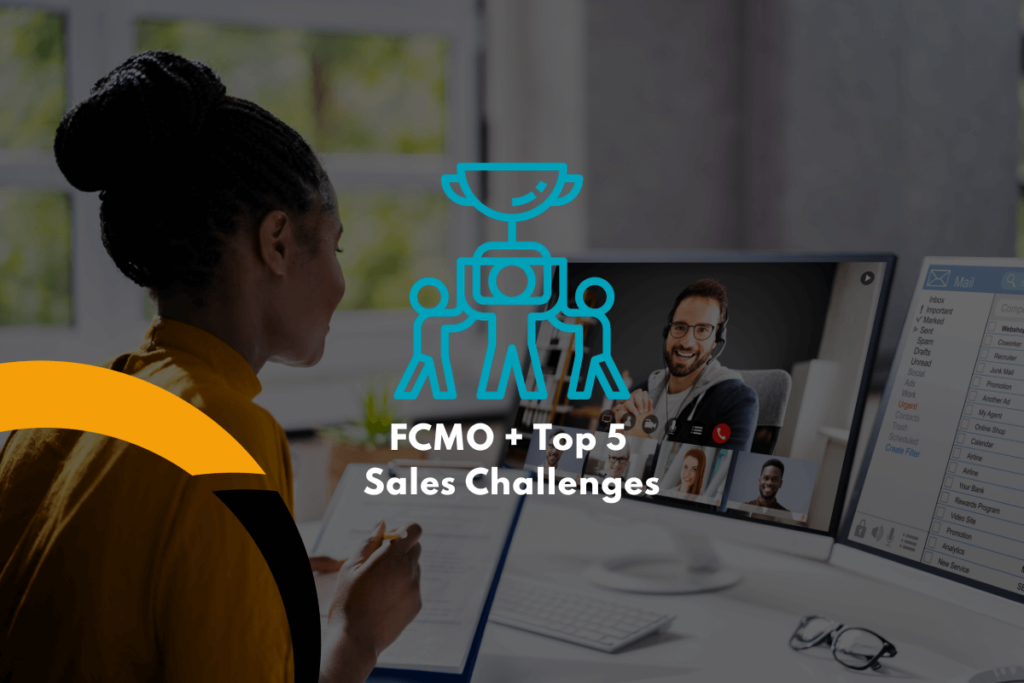B2B sales in the digital space has its positives and negatives. Everyone is online, but is it for entertainment or solutions? When is your target audience more receptive to hearing about your offering? On what platform? This leaves the gap between high-performing and low-performing salespeople or even teams pretty wide, which impacts revenue. So, what’s to be done? The obvious solution is to invest in your teams through processes, training, mentoring, and resources, but the not-so-obvious avenue could be better alignment with marketing. Before we get into that, let’s look at some specific challenges that sales teams are facing.
1. Building Trust Virtually
The COVID-19 pandemic forever transformed how the world does business. Some businesses went remote, never to return to the office again, making in-person meetings hard to come by. Now, companies are more dependent on their brand than ever to cultivate and maintain the trust necessary to grow. Salespeople must learn to establish relationships and build credibility almost completely by virtual means.
2. Moving Towards A Buyer First Mentality
Whether we like it or not, the average B2B buyer is more powerful than ever because they have access to an unprecedented amount of information from multiple sources. If the marketing team isn’t educating your audience, chances are they are getting their information from your competitors and buying from those trusted sources. This forces salespeople, and marketers alike, to make adjustments for how buyers want to buy vs how we want to sell. Consumer-centric selling often looks like salespeople taking a “trusted advisor” role. Stick around until the end for some tips on how you can partner with marketers to build credibility and trust by using existing resources.
3. Incorporating Social Selling
The learning curve, writing, and cadence of social media can look like adding more work on top of quotas, CRM updates, phone calls, and the various other boxes to check for salespeople. However, the data around the benefits of social selling should refute any doubts about its viability as a major strategic activity. “According to data from LinkedIn, 78% of social sellers outsell peers who don’t use social media. And 18.9% of SMBs thought that social media marketing was the best driver of sales in 2021 — email was the only medium that scored higher.” On top of being the youngest medium, social media is constantly evolving. The resistance is natural. The ways of the salespeople were established before the computer, reestablished with CRMs, and will have to be re-standardized to include social media.
4. Controlling the Sales Process Both Internally and Externally
“Why are there so many steps in the process?” “Oh, we can get that information later.” B2B sales processes are designed to move a lead toward a purchase. Some are simple and some are complex. All of them should be documented, evangelized, and followed to ensure performance. That’s not to say that there’s no space for innovation, but straying too far from the process can have a major impact on conversion and customer satisfaction. Whether it is a choice to skip steps in the process or if the prospect is pushing to go off script, it is important that the sales team knows, not just how to do things, but also why the processes exist. This way they can hold themselves, and customers, accountable to fully participate, so that the purchasing process goes smoothl,y and the data gets populated.
5. Long Sales Cycles Are Reducing Effectiveness
As the economy ebbs and flows, the sales cycle is just getting longer. Inclusion and upside down leadership adds dependencies on a greater number of stakeholders for agreement. Purchase-by-committee creates multiple personas to meet, educate, and delight to close the deal. Sometimes they’re in agreement and sometimes the process stalls out due to distractions and conflicting priorities. It can be pretty frustrating to navigate getting all of the context and requirements, while keeping everyone engaged in the process. In addition to the one-to-many sales scenario, gatekeepers limit access to the decision makers, procurement policies requiring multiple options, and general market instability all contribute to the lengthening of sales cycles.
Final Thoughts
B2B consumers are savvy, well-informed, and want to buy how they want to buy, but that doesn’t stop companies like yours from doing your very best to add value and present solutions to challenges for your audience. Sales teams everywhere are strategizing and retooling to accommodate these customers. As your Fractional CMO, we will work with sales to create an integrated, educational, and impactful approach to marketing that’s rooted in sales enablement because a challenge for sales is a challenge for the entire company. Reach out to talk about how we can get started with sales enablement for your company.


